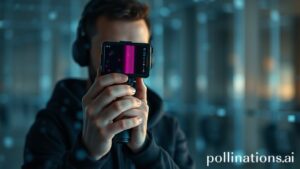Authenticity Over Algorithms: Why AI-Free Media Storage is Essential for Modern Photographers
Estimated reading time: 8 minutes
Key Takeaways
- The pervasive integration of AI in photography poses significant challenges to artistic integrity, data privacy, and intellectual property for photographers.
- AI-free media storage provides a secure sanctuary, ensuring original files remain untainted by algorithmic analysis or modification, preserving human creativity.
- Authenticity is increasingly valued in a digital world; it builds client trust and distinguishes a photographer’s unique vision from AI-generated content.
- Platforms like PhotoLog are designed explicitly to be AI-free, offering features like end-to-end encryption and control over personal S3 storage for ultimate data sovereignty.
- Photographers must proactively educate themselves, audit their tech stack, and adopt an ethical stance on AI to safeguard their creative legacy and business.
Table of Contents
- The Double-Edged Sword of AI in Photography
- The Resurgence of Authenticity: Why It Matters More Than Ever
- AI-Free Media Storage: A Sanctuary for Your Creative Legacy
- PhotoLog: Championing Authenticity in Media Storage
- Practical Takeaways for a Future-Proof Photography Practice
- The Human Touch Endures
- Secure Your Authentic Vision Today
- FAQ
In an increasingly digitized world, the very essence of photography—capturing authentic moments and expressing unique creative visions—is facing unprecedented challenges. As artificial intelligence (AI) rapidly integrates into every facet of our lives, from image generation to sophisticated editing algorithms, photographers find themselves at a crossroads. The promise of automation and enhanced capabilities clashes with a growing concern about preserving artistic integrity, data privacy, and, ultimately, the irreplaceable value of human creativity. This tension brings us to a crucial discussion: Authenticity Over Algorithms: Why AI-Free Media Storage is Essential for Modern Photographers.
The rise of AI in photography is not merely a passing trend; it’s a fundamental shift in how images are created, processed, and consumed. While AI offers tantalizing possibilities for efficiency and innovation, it also introduces complex ethical dilemmas and practical considerations that demand our attention. For modern photographers, navigating this landscape requires not just artistic skill, but a discerning eye for the tools and platforms that genuinely support their craft without compromising its core values. It’s about making a conscious choice to safeguard their legacy against the indiscriminate data-mining and algorithmic influence that has become commonplace.
The Double-Edged Sword of AI in Photography
AI’s presence in the photography world is undeniable. From advanced noise reduction and automatic object removal in editing software to AI-powered content generation that can conjure hyper-realistic images from text prompts, the technology is reshaping what’s possible. For many, these advancements represent a leap forward, offering shortcuts and capabilities that once seemed unimaginable. Imagine a photo editing solution that instantly corrects exposure, sharpens details, and even suggests stylistic enhancements with a single click. For some, this is the future of digital asset management, streamlining workflows and allowing more time for creative pursuits.
However, beneath this veneer of convenience lies a growing unease. Photographers are artists, storytellers, and documentarians. Their work is a reflection of their perspective, skill, and the human experience they capture. When AI starts to interpret, modify, or even generate images, questions of authorship, originality, and intellectual property inevitably arise. What constitutes an “authentic” photograph when an algorithm has had a hand in its creation, or worse, when the image itself is a product of AI imagination rather than a captured moment?
This concern extends beyond the creative process itself. Many AI tools, particularly those offered by large tech companies, operate by processing vast amounts of user data, often without explicit, transparent consent regarding how that data might be used. Your uploaded photos, your editing choices, even your subject matter, can become fodder for training AI models. This raises significant privacy implications and directly impacts the concept of data security for photographers. The very images you create, intending to be uniquely yours, could inadvertently contribute to a generic dataset that fuels the creation of content indistinguishable from human work, ultimately devaluing your craft.
The industry is already grappling with the implications. Stock photo agencies are seeing an influx of AI-generated content, creating a race to the bottom for human photographers. Legal battles over copyright for AI-generated works are emerging. The concept of “deepfakes” highlights the terrifying potential for AI to manipulate visual information, eroding trust in imagery itself. In this environment, photographers are increasingly seeking ways to protect their creative integrity and ensure their work remains untainted by algorithmic influence.
The Resurgence of Authenticity: Why It Matters More Than Ever
In a world awash with manufactured content, authenticity has become a precious commodity. Clients, audiences, and even other artists are increasingly seeking out work that is genuinely human, unadulterated, and reflective of a true vision. This isn’t just a nostalgic sentiment; it’s a fundamental demand for transparency and trust.
For photography business leaders, authenticity is a cornerstone of their brand. Their reputation is built on the genuine connection they forge with subjects, the unique stories they tell, and the unvarnished truth captured through their lens. If their work is perceived to be influenced or augmented by AI in ways that compromise its originality, it can erode client trust and dilute their brand identity. Imagine a wedding photographer whose images are subtly “enhanced” by an AI that learns from millions of other wedding photos, subtly erasing the unique quirks that made that specific day special. The value lies in the unique perspective, not the generic perfection.
For photography enthusiasts, the joy of the craft often lies in the challenge, the learning, and the personal expression. Over-reliance on AI can stifle this growth, turning creative exploration into a mere exercise in prompt engineering or filter application. Preserving authenticity means cherishing the process, the decisions, and the imperfections that make a photograph truly one’s own. It’s about nurturing visual storytelling that is deeply personal and resonant.
This renewed focus on authenticity isn’t just about resisting technology; it’s about making deliberate choices. It’s about understanding the nuances of how technology interacts with creativity and choosing tools that align with a commitment to original art. It is in this context that AI-free media storage emerges not just as an option, but as an essential component of a modern photographer’s toolkit.
AI-Free Media Storage: A Sanctuary for Your Creative Legacy
The concept of AI-free media storage might seem counterintuitive in a tech-driven world, but it addresses a profound need: a secure, neutral space where your images and videos are stored exactly as you created them, without being analyzed, scanned, modified, or used to train algorithms. It’s about declaring digital sovereignty over your creative output.
Think of your media storage solution as your digital vault, the repository of your life’s work. If that vault is constantly being “inspected” or “interpreted” by AI, then its neutrality is compromised. An AI-free platform ensures that your original files, your raw data, and your artistic vision remain untouched and uninfluenced by external algorithms. This is crucial for maintaining intellectual property rights and safeguarding privacy in photography.
Many photographers are already considering the long-term implications of AI on their craft and their business. They recognize that their unique selling proposition lies in their human touch. Therefore, choosing a media storage solution that explicitly commits to an AI-free environment is a strategic decision that signals a commitment to ethical practices and the preservation of human art. It’s a choice that supports human creativity by providing a digital space where it can thrive without algorithmic interference.
PhotoLog: Championing Authenticity in Media Storage
At Glitch Media, we understand these concerns deeply. Our PhotoLog platform was conceived and built with the modern photographer’s need for authenticity, control, and security at its core. PhotoLog is a dedicated SaaS for photographers designed to be explicitly AI-free, ensuring your creative work remains your own, from upload to sharing. We believe that true creative control means your data is never used to train models, analyze content for advertising, or modify your files without your explicit, direct instruction.
Here’s how PhotoLog addresses the critical needs of photographers seeking Authenticity Over Algorithms:
- Upload Any Media File: PhotoLog embraces the diverse nature of modern photography and multimedia. Whether you’re working with high-resolution RAW files, intricate PSDs, 4K video footage, audio recordings, or any other digital asset, our platform supports it without prejudice or algorithmic assessment. Your creative output, in all its forms, is preserved exactly as you intended, free from AI analysis that might misinterpret or categorize it. This flexibility supports all facets of digital asset management for a comprehensive media professional.
- Real End-to-End Encryption (E2EE): This is the bedrock of true privacy and security. With PhotoLog, your files are encrypted on your device *before* they even leave your computer and can only be decrypted by you or those you explicitly share with. This means that neither PhotoLog, nor any third party, can access or read your unencrypted data. It’s a fundamental commitment to data security for photographers, ensuring that your most sensitive and original work is protected from prying eyes and, crucially, from any potential AI-driven data-mining operations. Your creative work remains yours, inherently private.
- Ability to Use Your Own S3 Compatible Storage: For those who demand the ultimate control over their digital assets, PhotoLog offers the unique capability to integrate with your own S3 compatible storage. This means you can keep your files on infrastructure that you own or control, completely bypassing reliance on our physical storage. This feature underscores our commitment to data sovereignty, providing an unparalleled level of control and assurance that your data is not subject to any AI processes beyond your direct command. It transforms cloud storage for photographers into a truly personalized and secure experience.
- Mini Website Builder: Presenting your authentic vision requires a platform that doesn’t impose its own aesthetic or algorithmic curation. Our mini website builder allows you to showcase your portfolio, client galleries, or project collections in a clean, professional, and customizable manner. This is your digital gallery, free from the influence of trending algorithms or AI-driven content suggestions that might dilute your unique presentation. It’s about empowering you to control how your portfolio management is seen by the world.
- Sharing via QR Code & Collaborative Albums: Collaboration and sharing are vital for photographers, but they often come with security and privacy trade-offs. PhotoLog facilitates secure sharing through unique QR codes for individual files or entire albums. This direct, untraceable method ensures that your shared work reaches only the intended recipient, bypassing public links or email attachments that could be intercepted or scanned. For teams or clients, our collaborative albums allow for secure, encrypted group access without compromising the privacy or originality of the content. There’s no AI scanning of shared content for insights or targeting; just direct, private access for invited collaborators.
Practical Takeaways for a Future-Proof Photography Practice
Navigating the evolving landscape of AI requires informed decisions. Here are some actionable insights for both photography enthusiasts and business leaders:
For Photography Enthusiasts:
- Educate Yourself: Understand how AI is used in the photography tools you currently use. Read privacy policies and terms of service carefully. Be aware of how your data might be utilized.
- Prioritize Authenticity: Consciously value and cultivate your unique creative vision. Don’t let the allure of quick AI enhancements overshadow the satisfaction of mastering your craft.
- Back Up Your Originals Securely: Ensure your unedited, original files are stored in an AI-free, encrypted environment. These are the true records of your work.
- Experiment Responsibly: While it’s good to explore new technologies, be mindful of where AI truly enhances your vision versus where it might detract from your authenticity or intellectual property.
For Photography Business Leaders:
- Audit Your Tech Stack: Evaluate all your software and service providers (storage, editing, client galleries) for their AI policies and data usage practices. Ensure they align with your brand’s commitment to authenticity and client privacy.
- Communicate Transparency: Be clear with clients about your creative process. If you use AI tools, be transparent about how and why. For many, a commitment to human-centric photography can be a strong selling point.
- Invest in Secure, AI-Free Infrastructure: Protect your most valuable assets – your original works and client data – with platforms that offer real encryption and an explicit AI-free promise. This builds client trust and safeguards your reputation.
- Develop an Ethical Stance on AI: Consider how your business will address AI-generated content, copyright, and data privacy. Having a clear policy can differentiate you in a competitive market.
- Focus on the Human Element: Emphasize the unique perspective, emotion, and connection that only a human photographer can bring to a project. This is your enduring value proposition in the age of algorithms.
The Human Touch Endures
In a world increasingly shaped by algorithms, the enduring power of a human-made photograph remains unchallenged. It’s the unique perspective, the raw emotion, the undeniable authenticity that resonates most deeply with viewers. As photographers, your craft is a testament to the power of observation, skill, and creative intent.
Choosing AI-free media storage is more than just a technical decision; it’s a statement. It’s a commitment to your craft, to your intellectual property, and to the fundamental value of human creativity. It’s about building a future where your legacy is preserved, untainted by the ever-shifting sands of algorithmic influence. By prioritizing platforms like PhotoLog, you’re not just storing files; you’re safeguarding the very essence of what makes your work uniquely, authentically yours.
Secure Your Authentic Vision Today
Ready to experience media storage that respects your creative integrity and ensures your data remains truly yours? Explore PhotoLog and discover a platform designed for the modern photographer who values Authenticity Over Algorithms.
Visit photolog.cloud to learn more and start protecting your creative legacy.
FAQ
- What is AI-free media storage and why is it important for photographers?
- How does AI impact a photographer’s creative integrity and intellectual property?
- What are the privacy concerns for photographers using AI-integrated platforms?
- How does PhotoLog ensure authenticity and security for photographers?
- What practical steps can photographers take to protect their work from AI influence?
AI-free media storage is a secure, neutral digital space where your images and videos are stored exactly as you created them, without being analyzed, scanned, modified, or used to train algorithms. It’s crucial for photographers to preserve artistic integrity, protect intellectual property rights, and maintain privacy by ensuring their creative work remains untouched and uninfluenced by external AI processes.
AI can impact creative integrity when algorithms interpret, modify, or even generate images, raising questions of authorship and originality. For intellectual property, many AI tools process user data (uploaded photos, editing choices) to train models, potentially contributing to generic datasets that devalue unique human work and leading to copyright disputes over AI-generated content.
Privacy concerns arise because AI-integrated platforms often process vast amounts of user data without transparent consent on how it will be used. This means your personal and creative data could be used to train AI models, potentially revealing sensitive information about your work or subjects, and contributing to a future where your unique style is diluted by algorithmic influence.
PhotoLog champions authenticity and security by being explicitly AI-free. It offers real end-to-end encryption (E2EE), meaning files are encrypted on your device and only decrypted by you. It supports all media file types without AI analysis, allows integration with your own S3 compatible storage for ultimate control, and facilitates secure sharing via QR codes and collaborative albums without AI scanning.
Photographers should educate themselves on AI usage in their tools, prioritize authenticity by valuing their unique vision, and securely back up original files in AI-free, encrypted environments. Business leaders should audit their tech stack for AI policies, communicate transparency with clients, invest in secure AI-free infrastructure, develop an ethical stance on AI, and always focus on emphasizing the invaluable human element in their work.





